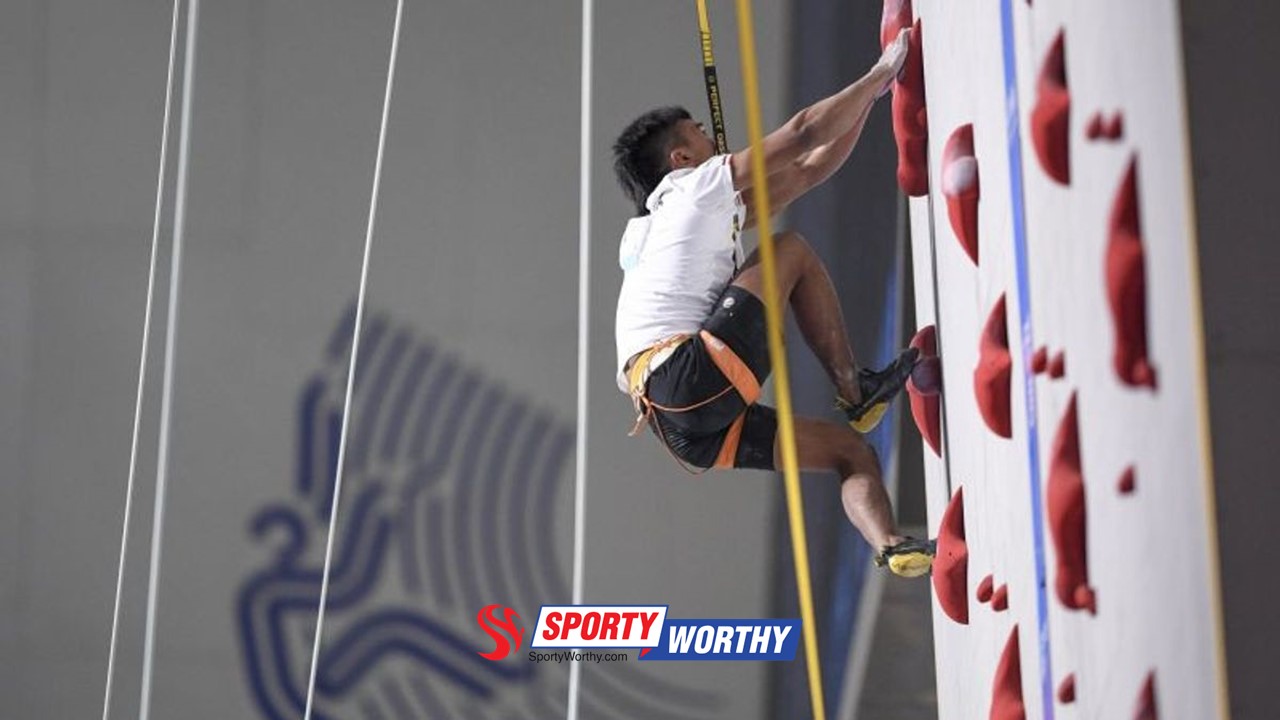Table of Contents
ToggleSport climbing in the Philippines has been steadily gaining popularity as more and more enthusiasts are drawn to the breathtaking landscapes and challenging rock formations the country offers. The Philippines has become a sought-after destination for sport climbers worldwide with its diverse and stunning natural rock formations. This blog post aims to provide expert tips for an epic sports climbing experience in the Philippines. We offer valuable insights and advice for climbers exploring the exhilarating world of rock climbing in this tropical paradise. Whether you’re a seasoned climber or new to the sport, these tips will help you make the most of your climbing adventure in the Philippines.
What is Sport Climbing?
Sport climbing is a challenging Olympic sport that involves athletes climbing artificial rock walls using their hands and feet to reach the top of the wall within a specified time. The sport combines strength, agility, and mental fortitude as climbers navigate various routes that require different techniques, such as dynamic movements, precise footwork, and problem-solving skills. Sport climbing made its Olympic debut at the 2020 Tokyo Games, featuring three disciplines: lead climbing, speed climbing, and bouldering. Lead climbing involves ascending as high as possible on a wall within a time limit, while speed climbing focuses on completing a standardized route as quickly as possible. Bouldering, on the other hand, requires climbers to navigate short, challenging routes without ropes.
The rigorous training of athletes in sport climbing involves a combination of physical conditioning, technical skill development, and mental preparation. Athletes undergo strength and endurance training to build the upper body and core strength required for climbing. Additionally, they practice specific climbing techniques to improve their agility, flexibility, and coordination. Mental training is also crucial as climbers need to stay focused, remain calm under pressure, and adapt quickly to different climbing challenges. In the Philippines, sport climbing has been gaining popularity, with athletes dedicating themselves to intense training regimens to compete nationally and internationally. The growing interest in sport climbing in the Philippines has led to the development of specialized training facilities and coaching programs to support the advancement of local climbers on the global stage.

Here are 4 expert tips to master sport climbing in the Philippines:
1. Choosing the Right Climbing Locations
Regarding sport climbing in the Philippines, several popular destinations cater to beginner and experienced climbers. One such location is Cantabaco in Cebu, known for its limestone cliffs and challenging routes. Cantabaco’s unique features include its beautiful natural rock formations and the opportunity to climb above the lush greenery of the surrounding forest. However, climbers should be aware of the sharp and sometimes brittle rock, making it essential to climb with caution and proper equipment.
Another renowned spot for sport climbing in the Philippines is Atimonan in Quezon Province. This location offers a variety of routes with different levels of difficulty, making it suitable for climbers of all skill levels. The unique feature of Atimonan is its breathtaking coastal views and the opportunity to climb right by the sea. Climbers should be prepared for the challenges the saltwater environment poses, such as potential equipment corrosion. It’s crucial for climbers to thoroughly research and select the right spot based on their skill level and preferences to ensure a safe and enjoyable climbing experience in the Philippines.
2. Essential Gear and Equipment for Sport Climbing in the Philippines
Regarding sport climbing in the Philippines, having the right gear and equipment is crucial for a safe and enjoyable experience. One of the most important gear for sport climbing is the climbing shoes. Choosing a pair that fits snugly without causing discomfort is essential, providing good support and grip for different types of rock surfaces. Additionally, investing in a high-quality harness is essential for safety, as it will be the primary connection between the climber and the rope. Look for a harness that is comfortable to wear for extended periods and has durable construction to withstand the rigors of climbing.
In addition to climbing shoes and a harness, other essential gear for sport climbing in the Philippines includes a reliable rope, carabiners, quickdraws, a helmet, and chalk for better grip. When selecting these items, prioritize safety and quality to ensure they can withstand the demands of sport climbing. Proper gear and equipment enhance the climbing experience and play a vital role in ensuring the climber’s safety. It’s important to thoroughly research and invest in trusted brands and equipment that meet safety standards, ultimately contributing to a successful and enjoyable sports climbing experience in the Philippines.
Where to Buy Sport Climbing Gear and Equipment in the Philippines?
For those embarking on their sport climbing in the Philippines, acquiring the necessary gear and equipment is a pivotal step towards ensuring a safe and fulfilling experience. When purchasing sports climbing gear in the Philippines, online platforms such as Lazada and Shopee provide a convenient and extensive range of options to cater to climbers’ needs. From climbing shoes to harnesses, ropes, carabiners, and helmets, these platforms offer numerous choices from reputable brands, allowing climbers to select gear that aligns with their preferences and requirements. With a focus on safety and quality, climbers can explore a diverse gear selection on Lazada and Shopee, ultimately equipping themselves with a successful sport climbing venture in the Philippines.
3. Understanding Climbing Techniques and Safety Measures
Sport climbing in the Philippines offers a diverse and challenging terrain, making it essential for climbers to understand specific techniques for navigating its unique landscapes. When climbing in the Philippines, it’s crucial to master techniques such as smearing, stemming, and dynoing, which are particularly useful for tackling the region’s limestone cliffs and diverse rock formations. These techniques allow climbers to effectively maneuver through overhangs, slabs, and pockets, providing the agility and control needed to conquer the varying terrain of the Philippines.
In addition to mastering climbing techniques, safety measures are vital in ensuring a successful and unforgettable experience in sport climbing in the Philippines. Prioritizing safety protocols such as thorough equipment checks, proper belaying techniques, and effective communication with belayers and fellow climbers is essential for mitigating risks and preventing accidents. Moreover, understanding the local weather patterns and potential environmental hazards specific to the Philippines can further enhance safety practices. By emphasizing the importance of proper training and knowledge of climbing techniques and safety protocols, climbers can confidently and secure the sport climbing terrain in the Philippines.
4. Engaging with the Community of Sport Climbing in the Philippines
Engaging with the local climbing community in the Philippines can benefit novice and experienced climbers. By connecting with fellow enthusiasts, individuals can access knowledge, advice, and support, which can greatly enhance their sport climbing experience. Joining the climbing community allows individuals to find like-minded partners for climbing excursions, fostering a sense of camaraderie and safety during outdoor adventures. Furthermore, being part of a community provides opportunities to learn about new climbing spots, techniques, and gear, ultimately allowing individuals to expand their skills and confidence in sport climbing in the Philippines.
To find climbing partners and join group climbs in the Philippines, individuals can start by contacting local climbing gyms, outdoor clubs, or online forums dedicated to sports climbing. Attending meetups, workshops, or events hosted by these groups can also be a great way to connect with potential climbing buddies. Social media platforms and apps designed for finding climbing partners can also be valuable resources for expanding one’s network. Engaging with the local climbing community fosters connections. It provides a platform for sharing experiences, exchanging valuable tips, and learning from other climbers, ultimately enriching the overall sport climbing experience in the Philippines.
Wrapping Up: The Rise of Sport Climbing in the Philippines
In summary, engaging with the local climbing community in the Philippines offers numerous benefits, including access to valuable knowledge, support, and like-minded partners for climbing excursions. To find climbing partners and join group climbs in Luzon, Visayas, and Mindanao, individuals can connect with local climbing gyms, outdoor clubs, and online forums dedicated to sport climbing in the Philippines. Additionally, attending meetups and utilizing social media platforms and apps designed for finding climbing partners can expand one’s network and enhance the climbing experience in the Philippines. By applying these expert tips and actively engaging with the climbing community, enthusiasts can explore the diverse climbing opportunities in the country and experience the thrill and satisfaction of successful sport climbing adventures in the Philippines.










